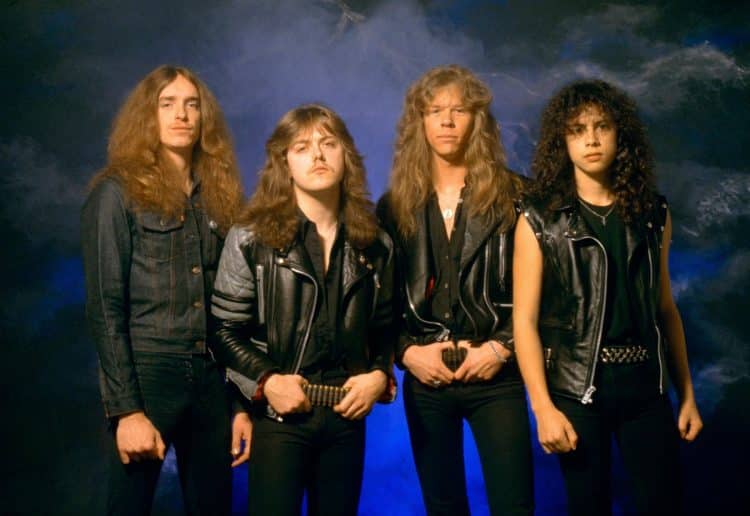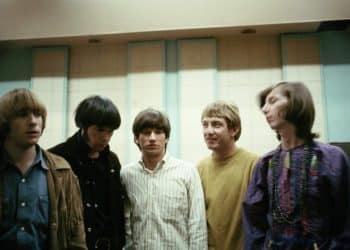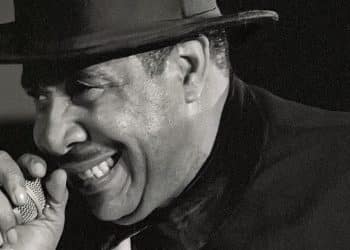Metallica, one of the most influential and successful heavy metal bands in history, has created an extensive catalogue of iconic songs that have shaped the genre and inspired generations of musicians. From their early thrash metal roots to their more melodic and introspective later works, Metallica’s music has consistently resonated with fans around the world. In this article, we’ll explore the top 10 most popular Metallica songs of all time, delving into the stories, themes, and musical elements that have made each track a beloved classic.
1. Enter Sandman
“Enter Sandman” is perhaps Metallica’s most recognized and celebrated song. Released as the lead single from their 1991 self-titled album (also known as “The Black Album”), this track showcases the band’s ability to craft a menacing yet accessible sound. The song’s iconic opening riff, paired with James Hetfield’s haunting lyrics about nightmares and childhood fears, creates an unforgettable atmosphere. The driving rhythm section and Kirk Hammett’s blistering guitar solos further contribute to the song’s intensity. “Enter Sandman” has become a staple of Metallica’s live performances and a gateway for many fans into the world of heavy metal.
2. Master of Puppets
The title track from Metallica’s 1986 album, “Master of Puppets” is a thrash metal masterpiece that explores themes of manipulation, addiction, and control. The song’s complex structure, featuring multiple sections and tempo changes, highlights the band’s musical prowess. James Hetfield’s powerful vocals deliver thought-provoking lyrics, while Kirk Hammett and Cliff Burton’s intricate guitar and bass work create a dense, layered soundscape. The extended instrumental break in the middle of the song showcases the band’s virtuosity and has become a favorite moment for fans during live performances. “Master of Puppets” is widely regarded as one of the greatest heavy metal songs ever written.
3. One
“One” is a harrowing and emotionally charged song from Metallica’s 1988 album, “…And Justice for All.” Inspired by the novel “Johnny Got His Gun,” the song tells the story of a soldier who has lost his limbs, sight, speech, and hearing in war, trapped in his own mind and yearning for death. The track begins with a soft, melodic introduction before exploding into a frenzied thrash metal assault, mirroring the soldier’s desperation and anger. The use of sound effects, such as machine gun fire and explosions, adds to the song’s immersive and disturbing atmosphere. “One” was also accompanied by a poignant music video that juxtaposed scenes from the 1971 film adaptation of “Johnny Got His Gun” with footage of the band performing, further emphasizing the song’s anti-war message.
4. Nothing Else Matters
A departure from Metallica’s usual thrash metal style, “Nothing Else Matters” is a melodic, introspective ballad from their 1991 self-titled album. The song, written by James Hetfield, explores themes of love, devotion, and personal integrity. The track begins with a gentle, fingerpicked guitar intro, gradually building in intensity as the rest of the band joins in. Hetfield’s emotive vocals, paired with the song’s lush harmonies and orchestral accompaniment, create a sense of intimacy and vulnerability. “Nothing Else Matters” showcases Metallica’s versatility and has become a beloved classic, often featured in the band’s acoustic performances.
5. Fade to Black
“Fade to Black,” from Metallica’s 1984 album “Ride the Lightning,” is a haunting and introspective track that deals with themes of depression, despair, and suicidal thoughts. The song begins with a melancholic acoustic guitar intro, slowly building in intensity as the full band enters with a powerful, emotionally charged performance. James Hetfield’s vocals are particularly poignant, conveying a sense of hopelessness and pain. The song’s structure, alternating between subdued verses and explosive choruses, mirrors the emotional turmoil of the lyrics. “Fade to Black” was a significant milestone in Metallica’s career, demonstrating their ability to tackle complex and sensitive subjects while maintaining their signature sound.
6. For Whom the Bell Tolls
Inspired by Ernest Hemingway’s novel of the same name, “For Whom the Bell Tolls” is a powerful and ominous track from Metallica’s 1984 album, “Ride the Lightning.” The song opens with a foreboding bell toll, setting the stage for a tale of war, death, and sacrifice. Cliff Burton’s iconic bass intro, accompanied by Lars Ulrich’s thunderous drums, creates a menacing atmosphere that persists throughout the song. James Hetfield’s vocals are delivered with a sense of urgency and intensity, complemented by Kirk Hammett’s searing guitar solos. “For Whom the Bell Tolls” is a testament to Metallica’s ability to craft compelling narratives within their music.
7. The Unforgiven
“The Unforgiven,” from Metallica’s 1991 self-titled album, is a somber and introspective track that explores themes of guilt, regret, and the struggle for redemption. The song begins with a haunting, western-inspired guitar intro, setting the stage for James Hetfield’s powerful vocals. The lyrics tell the story of an individual grappling with the consequences of their past actions and the difficulty of breaking free from societal expectations. The track’s dynamic shifts, from the subdued verses to the explosive choruses, mirror the emotional journey of the protagonist. “The Unforgiven” showcases Metallica’s storytelling abilities and their willingness to explore more nuanced and introspective themes.
8. Seek & Destroy
“Seek & Destroy,” from Metallica’s 1983 debut album “Kill ‘Em All,” is a raw, aggressive, and energetic track that encapsulates the band’s early thrash metal sound. The song’s driving rhythm, propelled by Lars Ulrich’s relentless drumming and Cliff Burton’s pulsating bass, creates a sense of urgency and excitement. James Hetfield’s vocals are delivered with a fierce intensity, while Kirk Hammett’s razor-sharp guitar riffs and solos add to the track’s overall ferocity. “Seek & Destroy” has become a fan favorite and a staple of Metallica’s live performances, often serving as the closing song of their concerts.
9. Creeping Death
“Creeping Death,” another thrash metal classic from Metallica’s 1984 album “Ride the Lightning,” draws its inspiration from the biblical story of the Tenth Plague of Egypt. The song’s ominous intro, featuring a menacing guitar riff and James Hetfield’s spoken-word vocals, sets the stage for an intense and relentless musical onslaught. The track’s powerful chorus, with its chant-like vocals and driving rhythm, has become a beloved moment for fans during live performances. “Creeping Death” showcases Metallica’s ability to craft compelling narratives while delivering a blistering thrash metal assault.
10. Battery
“Battery,” the opening track from Metallica’s 1986 album “Master of Puppets,” is a high-energy, thrash metal tour-de-force. The song begins with a serene, classical-inspired acoustic guitar intro, lulling the listener into a false sense of security before launching into a blistering, breakneck-paced riff that sets the tone for the rest of the track. James Hetfield’s aggressive vocals, paired with the relentless drumming of Lars Ulrich and the intricate guitar work of Kirk Hammett, create a sense of barely controlled chaos. “Battery” is a testament to Metallica’s mastery of the thrash metal genre and their ability to create songs that are both technically impressive and emotionally charged.









